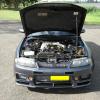Poncams causing VCT power dip
Announcements
-
Similar Content
-
Latest Posts
-
Just submitted my form and payment! Excited to become a club member 😁 Hoping I can get the 32 on club registration in time for the annual general meeting on the 17th.
-
I don't like the sound of that. No. I mean I actually don't like the way that they sound!
-
I'm rating the Michelin Pilot Sport 5's I currently have on my NC, they are great for throwing the thing around on the street, and handle great in the wet, the price is also reasonable They are not as good as something like a RS4 in the dry, but, as it is a street car, the 5's are alot better for inclement and cold weather I've found RE003's to be 5hit....
-
Just as long as it's not those putridly disappointing RE003s.
-
I had this same experience going from a set of no name tyres that were on a set of good wheels (Enkei RPFs) to some Potenza RE-11s (this was a few years ago). The wet grip in particular was so much higher that it was almost scary considering how dangerous the old tyres were in comparison. The expense of the tyres also made me want them to last longer so drove accordingly. Wife happy. So now she only 'lets' me buy some flavour of Brigestones...
-








Recommended Posts
Create an account or sign in to comment
You need to be a member in order to leave a comment
Create an account
Sign up for a new account in our community. It's easy!
Register a new accountSign in
Already have an account? Sign in here.
Sign In Now